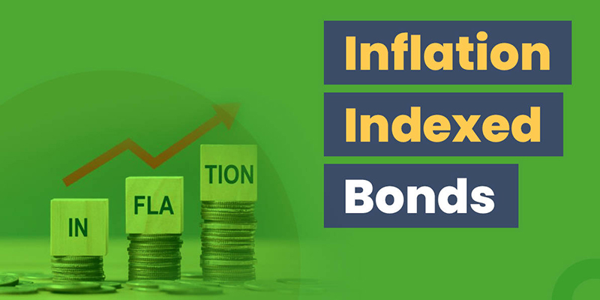Inflation-linked bonds are among the fastest-growing instruments in the current global financial environment. Why? As prices continue to soar, most people are concerned that their hard-earned money is gradually losing its purchasing power.
You work for years to put money into a nest; the only thing it can buy is a small hole. Well, that is where ILBs are of immense use to us.

Unlike plain vanilla bonds, these bright paper and ink instruments are inflation-indexed. Yet many people who invest need to understand how they operate or whether they are worth the effort. That is what we are here to dispel.
Please read this article to learn about inflation-linked bonds and their benefits. You will discover that they are the ingredients your portfolio was lacking.
Let's get started!
What Are Inflation-Linked Bonds?
Have you ever encountered a dynamic bond that evolves with the modern world?
While the plain vanilla cousins have little else going for them, ILBs have one ace up their sleeve. Their worth varies depending on the market inflation rates.
Here's how it works: When prices increase, the value of the bond also increases because of the principal amount. You are not locked into a certain amount, which buys a lesser amount over time.
This is a cost containment mechanism, especially when costs are likely to increase.
Inflation is also related to the fact that your money increases proportionately to the inflation rate, so its purchasing power will remain intact.
These bonds evolve and may provide much more security than conventional fixed-income securities.
How do Inflation-Linked Bonds Work?
Let's examine the impact of these anti-inflation bonds in detail. But here is where things get a little more exciting.
The bond's principal increases as inflation increases as if the bond is getting a raise to afford higher prices. Such an adjustment is often made concerning the Consumer Price Index, or CPI for short.
But what about those interest payments? They are determined using the new, higher principle that has just been arrived at. Therefore, your payouts also increase with inflation.
Remember that if prices decrease, the principal amount can also decline. These bonds mimic the state of the economy in a positive or negative sense.
Benefits of Inflation-Linked Bonds
Why invest in inflation-linked bonds? First, they protect against growing inflation rates. Second, these bonds stand in the way of inflation's attempts to nibble at your money.
They are also relatively stable in income, always being a reliable old 'Eddie.' Interest payments also increase because the bond's principal or face value rises with inflation.
ILBs are, therefore, a blessing to the cautious investor. They are best thought of as a form of financial insurance. They won't turn you into a millionaire overnight, but they will help maintain the muscle of your money in the long run.
Well, ILBs provide certainty in an environment of economic volatility. Who among us wouldn't benefit from a little more of that?
Potential Drawbacks and Considerations
Inflation-linked bonds are rocky. They also have their oddities, you know.

The first harvests can be less impressive in terms of yield. Compared to regular bonds, you are initially offered less. That is the cost that you have to endure for that inflation protection.
But what if prices begin to decline? Contrary to inflationary situations, your principal may even decrease in a deflationary situation. It is rare, but it is possible.
Then there is the timing factor. In the case of the Nike Company, timing is both a strength and a weakness. Buying is equally possible when inflation is high; therefore, you may need more time.
Therefore, have a glance at the economic outlook before you leap in. To remind you, there are no perfect portfolios for all people. ILBs are a method, not a miracle worker. Use them wisely.
How to Invest in Inflation-Linked Bonds?
You can directly purchase bonds from the government, one bond at a time. In the U.S., that means Treasury TIPS. Yes, it is simple, but a bit of expertise is needed.
Don't fancy the idea of going at it alone? Index funds and ETFs focused on TIPS are your buddies. They are a ready-made package where you diversify your risk on different bonds.
Where to start? Your best choice is the regular brokerage account. Most provide ILB funds or ETFs to their users. They have to type in 'inflation-protected' or 'TIPS' in their list of offerings.
For the do-it-yourself type, Treasury Direct is for individual TIPS. Look at fees, analyze performance, and ensure it aligns with your approach. Are you ready to wade into the inflation-linked bond market?
Understand Inflation-Linked Bonds and Their Benefits
These financial tools could be the ingredient your portfolio has been missing all this time. But remember that they are only one component.
Why not speak to a financial planner? They can help you determine whether ILBs are right for you. They will analyze your goals, risk tolerance, and current portfolio.
It is like having an annual medical checkup for your body, but in this case, it is for your wallet. You may find that ILBs are precisely what the doctor ordered to keep your money in tip-top shape.
What are you waiting for? Take action now!
Frequently Asked Questions
Q. What is the difference between ILBs and regular bonds?
Ans: ILBs can vary their principal and interest payments according to inflation, while other bonds do not. ILBs can retain their purchasing power over time, though they begin with lower yields.
Q. How do inflation-linked bonds protect against inflation?
Ans: They also raise their principal value about inflation rates, usually based on the Consumer Price Index, which assists in maintaining the bond's actual value.
Q. Can ILBs lose value in a deflationary environment?
Ans: Yes, they can. Prices can fall, lowering the principal of an ILB. Most ILBs have a floor value; you can return your initial investment at maturity.
Q. Are inflation-linked bonds a good investment during low inflation periods?
Ans: They can be, but the advantages are less significant than those of the other types of bonds. In low inflation, regular bonds have better yields than inflation-linked bonds.


